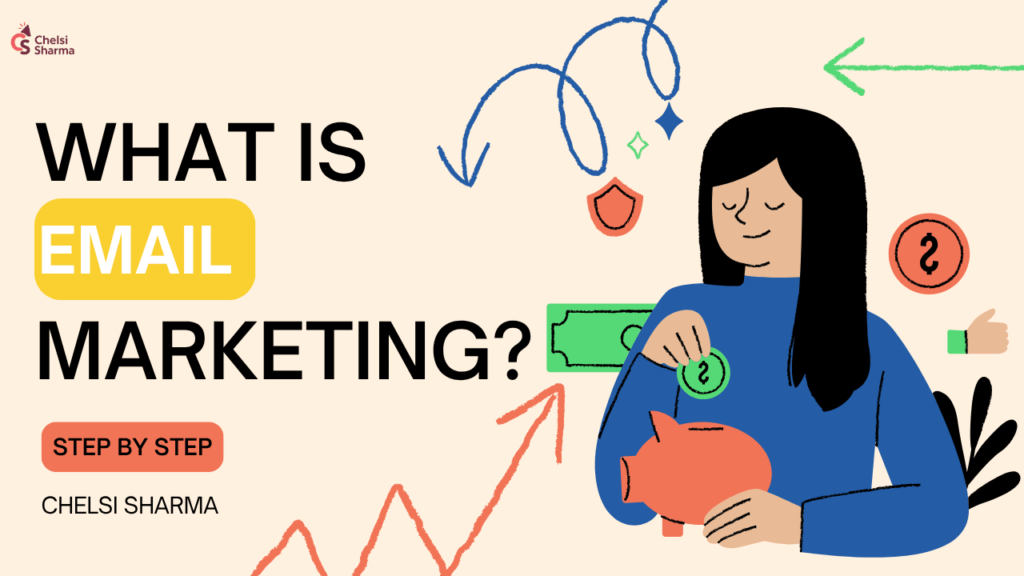
Email marketing is a form of direct digital communication that involves sending emails to prospects and customers. It helps businesses nurture leads, promote products, share content, and stay connected with their audience.
Why Email Marketing Still Works
Despite the rise of social media and instant messaging apps, email marketing remains relevant because it delivers messages directly to the user’s inbox, offering a personalized experience that other channels often can’t.
Benefits of Email Marketing
1. Cost-Effective Strategy
Compared to paid ads or print campaigns, email marketing is incredibly affordable, especially when targeting large audiences.
2. High ROI
According to research, businesses earn an average of $42 for every $1 spent on email marketing—one of the highest returns among all digital marketing channels.
3. Personalized Communication
With segmentation and automation, you can tailor your emails based on user behavior, preferences, or demographics.
4. Builds Customer Relationships
Emails keep your brand top-of-mind by delivering value through updates, offers, or educational content.
How Email Marketing Works
Step-by-Step Process:
1. Build an Email List
Start by gathering email addresses from interested individuals through sign-up forms, landing pages, or lead magnets.
2. Choose an Email Marketing Platform
Popular tools include Mailchimp, ConvertKit, and Sendinblue. These platforms simplify campaign creation and tracking.
3. Create Valuable Content
Craft content that resonates with your audience—be it promotional offers, newsletters, product updates, or educational tips.
4. Segment Your Audience
Divide your list based on preferences, behavior, location, or demographics to send more relevant content.
5. Automate Campaigns
Set up workflows that trigger based on user actions, such as welcome emails, abandoned cart emails, or birthday greetings.
6. Track and Analyze Performance
Use analytics to evaluate open rates, click-through rates, conversions, and more to refine future campaigns.
Types of Email Marketing Campaigns
1. Welcome Emails
Great for first impressions. A welcome email sets the tone and introduces your brand.
2. Newsletters
Used to share company updates, blogs, tips, or news with your subscribers regularly.
3. Promotional Emails
These are sent to promote offers, discounts, new products, or services.
4. Transactional Emails
Includes order confirmations, shipping updates, and receipts.
5. Re-engagement Emails
Target inactive users with special offers or content to bring them back.
Best Practices for Effective Email Marketing
Personalize Your Emails
Use the recipient’s name and tailor content based on previous interactions to boost engagement.
Optimize for Mobile
Ensure your emails look great on smartphones and tablets since a large portion of users access email via mobile.
Use Clear CTAs
Include strong call-to-actions that tell readers exactly what to do next—buy, read, sign up, etc.
A/B Test Campaigns
Test different subject lines, images, or CTA buttons to see what resonates best with your audience.
Comply with Regulations
Follow email laws like GDPR or CAN-SPAM by getting permission before sending and including an unsubscribe link.
Challenges in Email Marketing
1. Deliverability Issues
Emails landing in spam folders can hurt your campaign. Authenticate your domain and maintain a healthy list.
2. Low Engagement
Poor subject lines or irrelevant content can lead to low open and click rates. Continuous testing and refinement help.
3. Unsubscribes
If you send emails too frequently or lack value, people may opt out. Balance frequency with meaningful content.
Tools and Platforms for Email Marketing
Free and Paid Tools
- Mailchimp
- Constant Contact
- Sendinblue
- ConvertKit
- ActiveCampaign
These platforms offer templates, automation, analytics, and integration with your website or CRM.
Email Marketing Metrics You Should Track
1. Open Rate
Percentage of recipients who opened your email.
2. Click-Through Rate (CTR)
Measures how many people clicked on a link in your email.
3. Conversion Rate
Shows how many recipients took the desired action.
4. Bounce Rate
Tells you how many emails weren’t delivered successfully.
5. Unsubscribe Rate
Tracks how many people opted out of your list.
Advanced Strategies
Behavioral Triggers
Use customer behavior to trigger emails, like recommending products based on browsing history.
Dynamic Content
Show different content blocks to different subscribers within the same email based on their profile.
Drip Campaigns
Send a series of emails over time to educate, nurture, and convert leads.
FAQs
Conclusion
Email marketing remains one of the most impactful strategies in the digital world. It enables brands to reach their audience directly, build lasting relationships, and drive revenue. When done right—with personalization, segmentation, and analytics—email marketing becomes a key driver of growth and loyalty. Whether you’re just getting started or refining your strategy, using email marketing effectively can give your business a serious edge.
ABOUT THE AUTHOR
Chelsi Sharma is a digital marketing expert with a passion for helping businesses grow online. With experience in email marketing, SEO, social media, and content creation, she empowers brands to connect, engage, and convert more effectively in the digital space.

